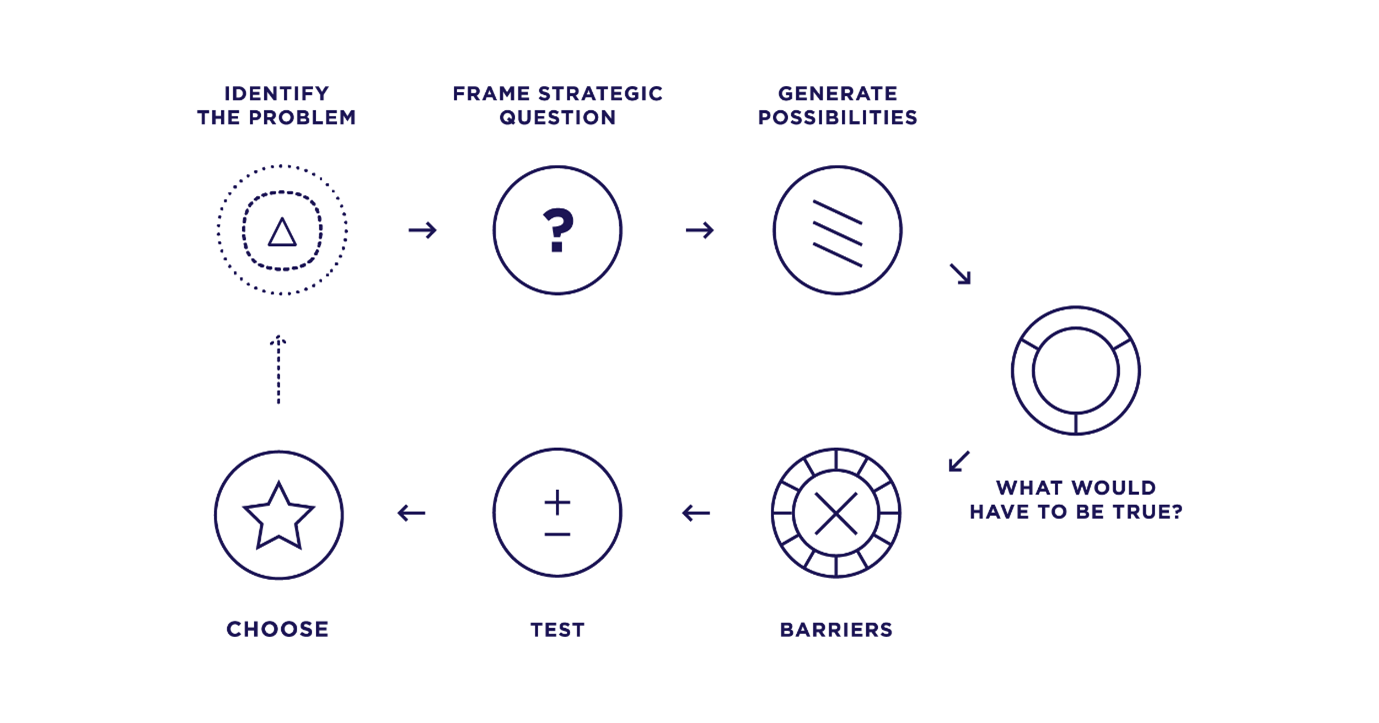According to IDC, global spending on digital transformation is projected to reach $3.4 trillion by 2026, and B2B connect research found that 95% of B2B decision makers agree that these funds are best spent on improving the buyer experience.
With new technologies like AI, automation, and data-driven analytics becoming integral, businesses have huge opportunities to streamline operations and enhance customer engagement if they make the right choices.
In this guide, we outline the key areas where B2B SMEs can begin their digital transformation journey. We also share a proven approach that has successfully guided B2B clients through this process.
We will also highlight challenges and potential problems to watch out for as you begin your journey.
What is digital transformation in B2B?
Digital transformation in B2B SMEs involves integrating digital technologies into all areas of the business, fundamentally changing how you operate and deliver value to customers.
It’s about using technology to improve processes, enhance customer experiences, and drive growth.
The goal is to create a more agile, efficient, and customer-centric culture that can quickly respond to market changes, client demands, and operational challenges.
Digital transformation approaches for B2B companies
Two common approaches that B2B SMEs can adopt for digital transformation are the inside-out and outside-in models.
Both approaches offer unique benefits and are excellent starting points for SMEs looking to modernise.
Inside-out transformation
Businesses can initiate their transformation with an inside-out approach, focusing on improving internal processes and operational efficiencies.
This involves evaluating current capabilities, identifying gaps, and optimising resources to meet marketplace demands more effectively.
For instance, a B2B software as a service company may harness AI to improve the efficiency of their reporting.
By focusing on improving internal workflows first, these businesses can reduce costs, minimise errors, and improve employee productivity.
This could include automation and data warehousing to provide in depth accurate business analysis that could help drive marketing and business decisions.
Outside-in Transformation
For a more customer-focused transformation, the outside-in approach would be used.
This model centres on understanding the needs, expectations, and challenges of clients, and designing business solutions that address them directly.
For example, a B2B SME could develop self-service portals that allow clients to track orders in real time or use AI-driven customer support solutions to offer a faster, more personalised service.
By focusing on the end customer, SMEs can deliver value that enhances customer loyalty and builds long-term relationships that lead to referrals and long term growth.
Setting digital transformation goals
The direction of your digital transformation efforts should align with your business objectives. For B2B SMEs, common goals include improving the customer experience, enhancing operational efficiency, and increasing data-driven decision-making.
We’ve identified three areas where B2B SMEs can focus their digital transformation efforts:
• Customer experience
• Automation platforms
• Data analytics
Customer experience for B2B professional services
Research by Salesforce found that 80% of B2B buyers expect companies to provide a customer experience on par with B2C brands, yet many SMEs still rely on outdated, manual processes that frustrate clients.
Enhancing the customer experience through digital means can differentiate your business from competitors.
Personalisation, faster response times, and seamless digital interactions are crucial in creating positive experiences that drive client retention and growth.
Examples of how customer experiences for B2B companies can be improved
To improve customer experience, consider the following three approaches:
1. Personalised client journeys:
Tailor your services to each client's unique needs by using CRM systems that track past interactions and predict future preferences.
Using a service design approach can allow you to map out the full sales process including onboarding and off boarding.
This could include automated emails, personalised recommendations, and customised order dashboards.
2. Choosing the right technology:
Select digital tools that integrate with your existing systems and processes.
For example, e-commerce platforms, customer portals, and digital payment solutions can create a seamless experience for your clients.
Engaging stakeholders, including service, product or IT teams, can help make informed, practical choices.
Alternatively speaking to an external partner like Distinction can help guide your team through this process.
3. Data analysis:
Use data analytics to continuously measure customer satisfaction and adjust your offerings accordingly.
Analysing data from surveys, reviews, and order histories can reveal areas where customer experience needs improvement.
The other part of this is improving your ability to analyse larger quantities of data from various sources through data warehousing.
They support complex data operations and serve as a foundation for advanced business intelligence (BI) tools. Popular data warehousing solutions include Amazon Redshift, Google BigQuery, and Snowflake.
Automation platforms
For B2B SMEs, automation can lead to significant improvements in efficiency and scalability.
Many small and medium-sized businesses could start by automating repetitive, manual tasks such as order processing, customer service inquiries, or financial reporting.
Examples of automation platforms
CRM (Customer relationship management) systems
Can handle everything from lead management and follow-up emails to sales pipeline tracking.
These tools help eliminate time-consuming administrative tasks and keep sales teams focused on closing deals.
Research from Twilio Segment in partnership with Aberdeen found that customer data platforms if implemented can increase customer satisfaction by over 9 times within a year as well as a 2.9 times increase in overall revenue.
ERP (Enterprise resource planning)
Optimises internal operations, including inventory, procurement, and supply chain.
Marketing automation tools
Can help staff automate sales nurturing so they can reach more customers without any drop in quality.
Automated emails can create personalised journeys at scale reducing the need for hands-on management while maintaining a high level of engagement.
Staff and Client Self-Service Portals
Implementing self-service portals for clients and employees streamlines access to essential information and services.
Clients can easily retrieve support, view order histories, and manage their accounts without needing to contact support, while staff portals allow employees to handle administrative tasks, access resources, and collaborate efficiently—minimizing bottlenecks and freeing time for higher-value work.
Benefits of implementing automation platforms
1. Increased efficiency:
Automation reduces the need for manual, repetitive tasks, freeing up time for employees to focus on more strategic activities.
By eliminating tedious, repetitive tasks, automation allows employees to focus on more meaningful work, leading to higher job satisfaction and lower turnover.
2. Improved sales and lifetime customer value (LTV)
Automated tools improve sales processes and customer engagement by personalising interactions and enabling better tracking of customer journeys. This leads to increased sales, stronger relationships, and repeat business.
3. Scalability:
Automation platforms can easily scale as the business grows, handling higher volumes of transactions, leads, and customer interactions without additional overhead.
Implementing data analytics in B2B companies
Data analytics is essential for driving digital transformation in B2B enterprises. By 2026 Gartner predicts 65% of B2B sales organisations will transition from intuition based decision making to data-driven decision making.
However, implementing data analytics in a B2B context often comes with challenges, including data silos, inconsistent data formats, and integration complexities.
To overcome these obstacles, companies need to establish robust data governance frameworks, integrate data sources, and invest in technologies that ensure seamless data flow and compliance with regulations.
Benefits of implementing data analytics in B2B companies
1. Predictive analysis:
Analysing customer data at scale enables companies to predict market trends, identify new opportunities, and make proactive business decisions.
This leads to more targeted marketing, optimised supply chain management, and improved forecasting.
A study by Centre for Economics and Business found 80% of businesses grew their revenues from leveraging real-time analysis of data.
2. Delivery of a personalised service:
By leveraging customer insights, B2B companies can offer more tailored products and services, enhancing customer satisfaction and building long-term loyalty.
3. Operational efficiency:
Utilising advanced analytics techniques helps predict resource requirements more accurately, ensuring optimal allocation of staff and inventory—reducing costs and improving service delivery.
4. Better sales performance:
Data-driven insights enable sales teams to identify high-value leads, prioritise outreach efforts, and craft more compelling sales strategies.
Learning what does and doesn’t work through analysis can be vital in ensuring resource effort and budgets are allocated to the right places.
Where can B2B companies start with Digital Transformation
There are a number of ways we work with clients to diagnose possible areas of improvement and how digital transformation initiatives can help achieve this.
Identifying key areas for digital transformation in B2B involves a structured approach to diagnosing problems and defining effective solutions. Here’s how we guide SME’s through this process:
Approach
We employ our Diagnose, Define, Deliver methodology to help organisations navigate their digital transformation journey.
Diagnose
The first step of a transformation journey is to diagnose the problems to be solved. A starting point here is to refer to the original goal you set.
• Understanding the Problem: Identifying and accurately diagnosing issues is crucial. We use a diagnostic sprint to swiftly uncover the root cause of problems. Techniques include:
• Root Cause Analysis: Tools like the Five Whys and Fishbone Diagram.
• Research Techniques: Customer and staff interviews, feedback surveys, data analysis (e.g., GA4, heatmaps, user recordings), and service design reviews.
These methods help us pinpoint specific issues and align them with customer needs.
Define
• Identify the problem: The results of the diagnostic phase should provide a clear understanding of the issues.

The strategy process map is a way to outline the strategic choices needed to address the identified problems, leading to a comprehensive plan.
We have broken down the steps in more detail below:
Identify the Problem:
• Start by clearly defining the problem or challenge at hand which you should have from the diagnosis stage. This involves understanding the situation and framing it in a way that allows for actionable steps.
Frame Strategic Question:
• Develop a critical, strategic question based on the identified problem. This question guides the decision-making process and focuses on what needs to be answered or resolved. It starts with How might we…
Generate Possibilities:
• Explore and brainstorm multiple options or solutions. This step encourages creative thinking and the consideration of a variety of approaches to tackle the problem.
What Would Have to Be True?:
• Examine the conditions or assumptions that must be valid for each possibility to succeed. This step involves scrutinising the feasibility of each option.
Barriers:
• Identify the obstacles or challenges that could prevent the realisation of the chosen possibilities. Understanding these barriers helps in planning to overcome them.
Test:
• Assess and test the different possibilities against real-world scenarios. This ensures that the solutions are viable and practical.
Choose:
• Based on the testing results and analysis of barriers, select the best option or strategy that addresses the problem effectively.
Plan creation
This involves a detailed roadmap of the actions required to solve the problem and is a blueprint to implement the solution.
Deliver
• Implementation: With a defined roadmap, you can proceed to execute the plan, focusing on delivering the proposed digital transformation initiatives effectively.
By following this approach, organisations can pinpoint areas for improvement and implement digital transformation strategies that enhance customer experience and operational efficiency.
Digital transformation challenges for B2B companies:
Delivering digital transformation in B2B companies is not without challenges.
Some potential barriers your organisation may face include:
Legacy systems:
Many B2B companies, particularly those in industries like manufacturing, finance, and logistics, rely on outdated technologies that do not seamlessly integrate with modern digital platforms.
This creates hurdles in data sharing, process automation, and workflow optimization, ultimately slowing down digital transformation efforts.
Resistance to change:
Employees and stakeholders may resist adopting new technologies due to uncertainty, disruption of established processes, or a lack of understanding about the benefits.
This resistance can undermine transformation initiatives, making effective change management and training critical components of a successful digital strategy.
Data privacy and security:
Following data privacy guidelines is complex but critical.
Establishing robust data governance practices is essential for B2B firms looking to harness digital technologies for competitive advantage.
Poor quality data prevents new technology use
Incomplete or inaccurate data can be a significant barrier to digital transformation. If your data is flawed, new technologies—such as advanced analytics, AI, and automation tools—cannot be leveraged effectively.
Unclear priority areas
Many B2B organizations struggle to identify the most critical areas for digital investment, leading to fragmented efforts that dilute impact.
Without a clear roadmap, businesses may invest heavily in technologies that fail to address core operational challenges or deliver ROI.
Skills and talent gaps
Successfully implementing a digital transformation strategy requires access to specialized skills.
Many B2B companies face a talent gap, making it challenging to build the right teams to drive digital initiatives forward.
Conclusion
By prioritising digital transformation, B2B companies can increase sales, optimise their processes, and ultimately create a more loyal and engaged customer base.
The starting point for implementing these strategies may differ depending on the current stage of your business, but with the ideas provided in this article, we hope you have a solid foundation to begin that journey.
If you're interested in exploring how we can support your digital transformation efforts, talk to us today.




